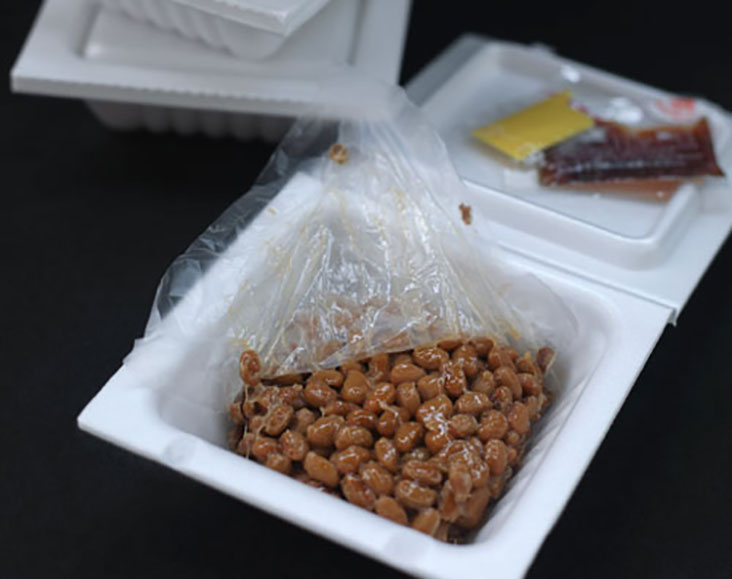KUALA LUMPUR, June 8 ― What do superheroes eat?
If you recall the scene after the credits rolled at the end of The Avengers (2012), the answer is some late-night shawarma.
Now, as tasty as these flatbread wraps of juicy kebab meats are, they probably aren’t particularly conducive to Thor’s bulging biceps or the Black Widow’s lightning fast reflexes.
One would imagine a greasy shawarma is an occasional treat, a reward for a hard-won battle against all manner of supervillains.
What superheroes eat on a regular basis is likely healthier. Though the word “healthier” may conjure visions of granola bars with the taste and mouthfeel of cardboard and sawdust, it doesn’t have to be that way.
I think the answer is obvious: superheroes ought to eat... superfoods. No?
Well, maybe not. (Though it’s tempting to imagine Dr. Bruce Banner throwing back shaker after shaker of green kale smoothies...)
A salad made from superfoods – natural, whole foods that are nutritionally dense – can be just the thing to make one feel like a superhero.
My take on a superfood salad revolves around a quartet of ingredients: kimchi, blueberries, natto and avocado.
Fiery-red kimchi, the Korean staple of salted and fermented vegetables, would win favour with Iron Man and the Flash for its treasury of vitamin C, carotene and lactic acid bacteria.

Blueberries can contribute to heart health and bone strength; blue-skinned and blue-furred heroes such as Mystique and the Beast may approve.

Natto, the traditional Japanese breakfast food of fermented soybeans, is brown but far from boring, nutrition-wise: a heroic combination of fibre, probiotics, vitamin K2 and nattokinase (found only in its namesake) may help reduce cholesterol and lower blood pressure.
Its sticky, slimy threads reminds one of the powerful web-slinging ways of everyone’s friendly neighbourhood Spider-Man surely?
And finally, avocados. Loaded with nutrients, from healthy fats to 20 different types of vitamins and minerals, I bet the Incredible Hulk enjoys this “alligator pear” for its green goodness.
Each superfood is stellar on its own but once assembled together, they’re like a super-team of awesomeness. Sort of like the Avengers...
SUPERFOOD SALAD
Treat this as a standalone salad, a refreshing light meal for a hot summer day, or as the foundation for something heartier.
For a post-workout meal full of carbohydrates to replenish the depleted glycogen stores in your sore muscles, combine this with some overnight oats (made creamy with protein-rich milk).
Need more protein? Add some leftover roast chicken meat or get some takeaway chicken from your neighbourhood chicken rice stall. (The chicken rice chilli sauce adds a garlicky kick to the salad, and the slices of cucumber some cool crunch.)
For those on the Keto Diet, eschew any additional carbohydrates and up the level of healthy fats. Another avocado would double the amount of anti-inflammatory oleic acid, famously found in olives.
Or go straight to the source and dress the salad with some extra virgin olive oil, giving it some spicy green notes.
Take cues from the main ingredients. In Japan, other than the requisite shoyu and karashi mustard, natto is also garnished with finely sliced spring onion; this could add a punch of flavour and colour to your salad.
If blueberries aren’t in season, try other healthy berries such as blackberries, raspberries and strawberries. Instead of cabbage kimchi, try kimchi made of cucumber, radish or even mushrooms.
There’s no wrong or right way to make this salad so long as it tastes good to you. When it tastes this delicious, the medley of nutritional benefits seems but a nice bonus!
Ingredients
2 tablespoons of kimchi
½ pack of blueberries (roughly 60g)
1 pack of natto
1 avocado, seed removed and peeled
Lemon juice, to taste
Freshly ground black pepper, to taste
1-2 pinches dried mixed herbs
1 teaspoon extra virgin olive oil (optional)
Method
Assemble all ingredients into a bowl large enough to mix and serve; this is a one-dish meal. First add the kimchi, reserving any kimchi liquid.
If the kimchi you’re using is made from whole cabbage, you may wish to chop it up with a knife or coarsely shred it using a fork and knife before adding to the bowl so every piece is roughly bite-sized.
Add the blueberries, removing the tiny stems if any. Open a pack of natto, setting the sachets of shoyu and karashi mustard aside.
Scoop the natto beans into the bowl; there’s no need to stir the natto to produce its distinctive slimy, sticky threads as the beans will be combined later with the other salad ingredients.
Add some or all of the shoyu and karashi mustard according to taste.
Slice an avocado into half, scooping out the seed and disposing of it. Cut the avocado halves once more, producing quarters (or if you like, cut them into cubes).
There is no need to mash it, the way you would for guacamole or smashed avocado on toast, as this will happen naturally when you mix the ingredients together before eating.

Squeeze some lemon juice over the cut avocado both to prevent discolouration (oxidisation from exposure to air) and to add some needed acidity to balance everything.
Finish off with freshly cracked black pepper and a pinch or two of dried mixed herbs.

Stir and combine evenly. Taste and season further if necessary: add some of the reserved kimchi juice for extra spice or if the salad proves too dry or sticky; add more of the shoyu and karashi mustard if the salad needs a bit more savouriness or umami flavour.
Serve immediately.
For more Weekend Kitchen stories and recipes, visit http://devilstales.com






















